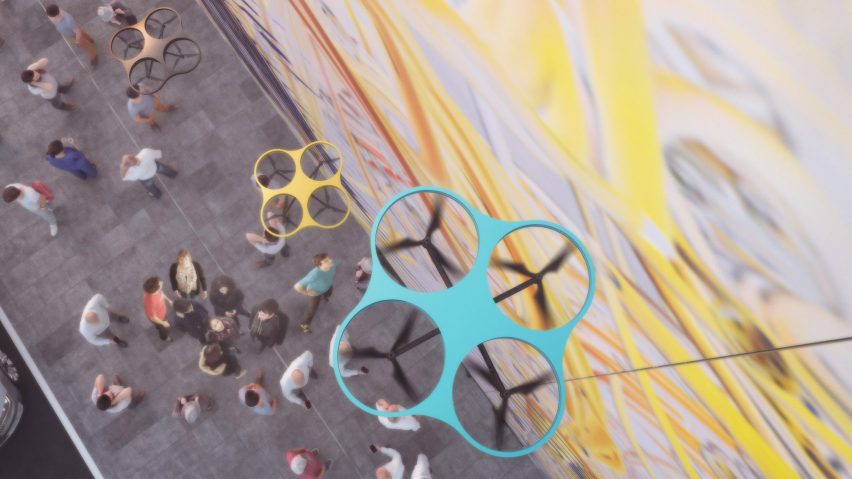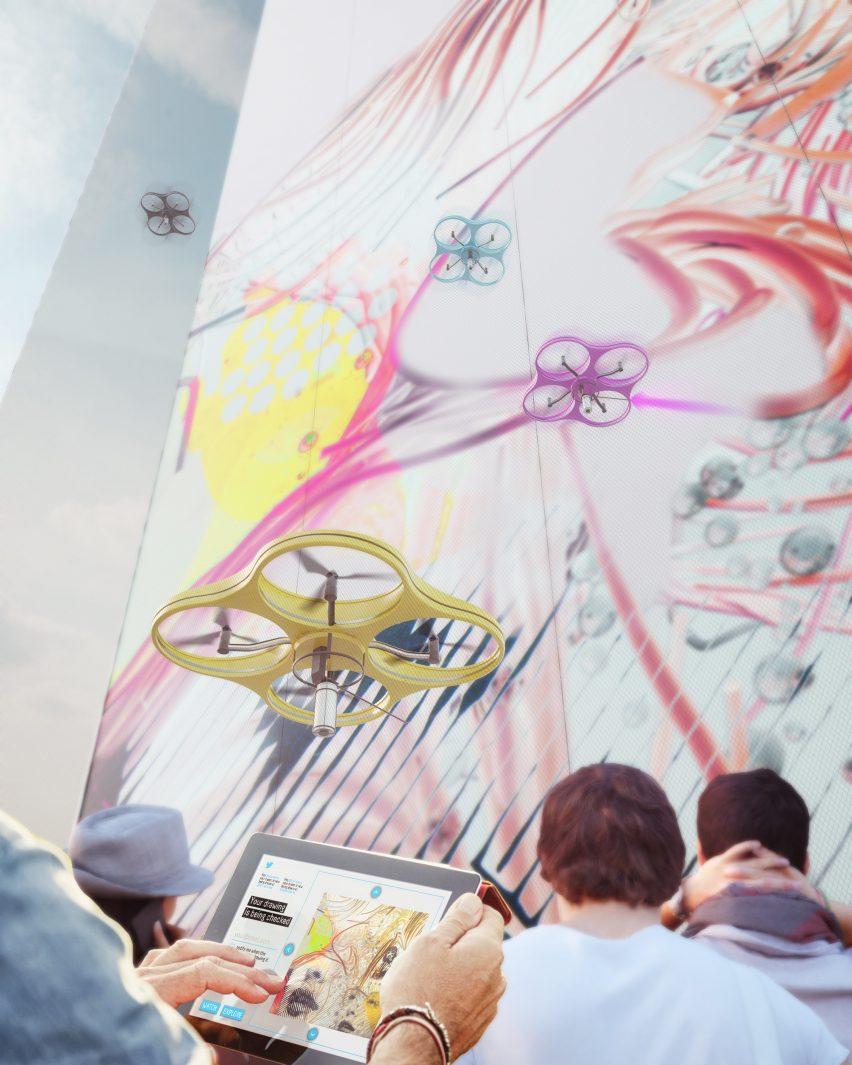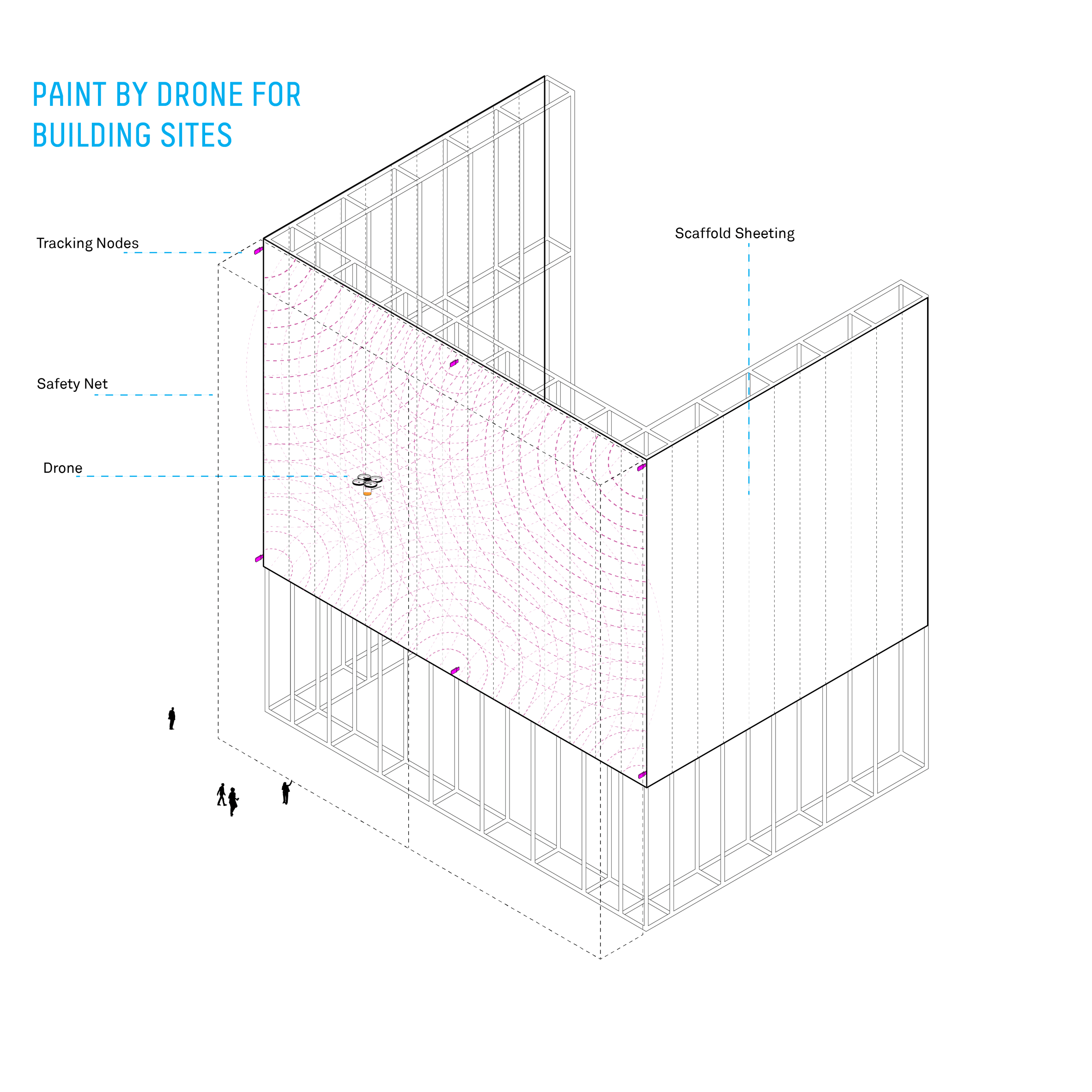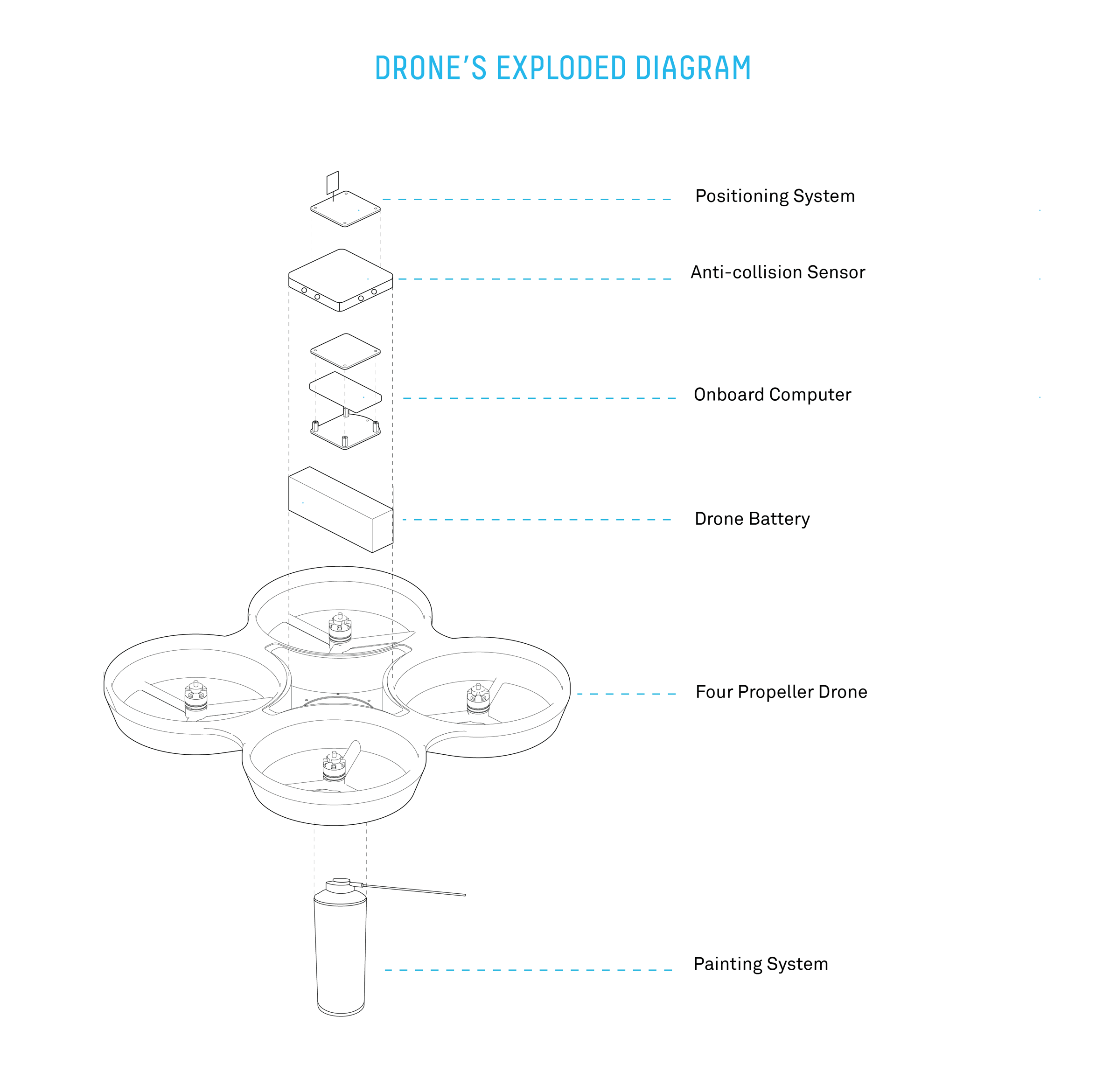
Carlo Ratti designs graffiti-painting drones to safely make multistorey artworks
Italian architect Carlo Ratti's Paint By Drone system uses remotely controlled flying robots to cover buildings in giant paintings.
Designed to turn scaffolding into giant canvases, the system uses a formation of small unmanned aerial vehicles (UAVs) to create artworks on blank surfaces. Each drone carries its own tank of paint, and uses CMYK colours to replicate the traditional printing process.

The robots are managed remotely, with their positions individually tracked, and are able to recreate any artwork submitted to a mobile app.
"We are keen to explore their artistic use, particularly as a way to engage with the built environment," Ratti told Dezeen. "What we call 'phygital graffiti' is the idea of leveraging drones and, more in general, digital technologies to create participatory works of public art."
The designer's office, Carlo Ratti Associati, has worked on several projects incorporating drones, including using them to act as a personal tour guide for visitors to the Massachusetts Institute of Technology (MIT) campus. In the past, Ratti also suggested that robots could be used to help eliminate disease in cities.

Two Paint By Drone pieces are planned for this year in Berlin and Turin, which will see scaffold sheeting in the cities covered in a giant artwork created by the system.
Details are yet to be finalised, but the artwork could be created by an artist first and coloured in by drones – controlled by an app, so that people can choose their own piece of the canvas to paint. There's also the potential for passers-by to draw their own designs, which will be recreated by the robots.
The system is still in development, but Ratti hopes to be able to eventually use it on any vertical surface.

"Imagine how this could make the realisation of works of public art both easier and safer, in urban contexts as well as the infrastructure level – for example alongside highways, within railway galleries, on bridges and viaducts," he said.
The designer, who teaches at MIT and directs its Senseable City Lab, is the founder of architecture firm Carlo Ratti Associati. The company has worked on a wide range of projects, from a retreat in the Himalayan mountains, to the "world's first Internet of Things sofa".
The possibilities of drones are being explored in everything from building – deployed to weave a carbon fibre pavilion in Stuttgart – to search and rescue, with Land Rover using unmanned aerial vehicles to scan landscapes after natural disasters.